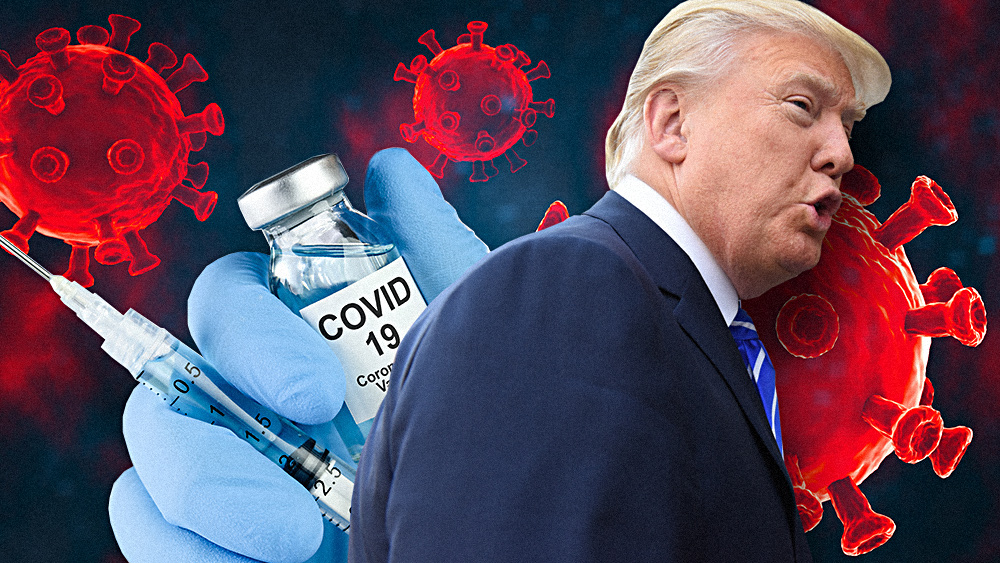Vaping dangers: Study reveals second-hand smoke from e-cigarettes contains 22 times the safe level of certain toxins
07/25/2023 / By Zoey Sky

Many people think electronic cigarettes (e-cigs) are “safer” than regular cigarettes, but a study has found that they are still bad for you. The results of the study revealed that second-hand e-cig smoke is linked to many health issues.
Details of the study were published in the journal Drug and Alcohol Dependence.
The study findings disprove the common belief of many e-cigarette users that vapes are safe to use in public, indoors or near non-smokers because they do not produce the traditional pungent smoke released by traditional cigarettes. This could be because many vape devices often have a rather pleasant or non-offensive odor. Sometimes, they may even produce a pleasant or fruity-smelling vapor.
Regular cigarettes contain thousands of chemicals, dozens of which are classified as carcinogens.
E-cig smoke is full of particulate matter
The scientists reported that a smoker who uses a disposable or pod-based device, like the popular Juul, emits at least 22 times the safe level of microscopic toxins called particulate matter (PM). These toxins are small enough that when inhaled, they can cause respiratory issues and enter the bloodstream.
Researchers from universities in Virginia and North Carolina have discovered that when e-cigarette users smoked in their cars for less than 10 minutes, the air around them was filled with possibly poisonous particulate matter called PM2.5.
PM2.5 refers to PM with a diameter of 2.5 micrometers or smaller. The toxins can come from both natural and man-made sources, like the burning of fossil fuels.
When inhaled, PM2.5 penetrates the lungs and irritates the entire respiratory system. The matter may cause or worsen health issues like asthma, bronchitis and heavy wheezing.
PM2.5 is small enough that it could enter your bloodstream, which can cause system-wide inflammation that raises the risk to your heart health. (Related: FDA now BANNING JUUL e-cigarettes, while R.J. Reynolds Tobacco still sells their own versions of the same, because the FDA and AMA have always supported CAMEL CIGARETTES.)
The findings follow evidence from the American Heart Association (AHA).
The AGA presented evidence that vape devices, once considered something that made it easier for cigarette smokers eager to quit, contain a potent mix of dangerous ingredients, such as artificial flavors, nicotine and solvents, that pose the same severe risks to heart health as smoking cigarettes.
Second-hand e-cig smoke is also bad for your health
The study authors explained that their research revealed how one person using an e-cig in a car with the windows closed “can cause a measurable increase in [particulate matter] concentration.” The findings also suggest that bystanders are likely exposed to secondhand e-cig aerosol when in a vehicle with someone who is actively using an e-cig.
For the study, the research team enrolled 60 e-cigarette users with an average age of 20. More than over 63 percent of the e-cig users were male and more than 83 percent were white.
Most of the study volunteers were daily e-cig users and had been for at least one year. Many users reported that they preferred disposable devices like Puff Bars.
Data showed that Juul and other pod-based devices were the second most popular type of vape used.
Researchers reported that the disposable devices raised concentrations of PM more than the pod-based devices or larger, more advanced devices called box mods.
For the study, the researchers asked the volunteers to use their e-cigs in their cars after 12 hours of going without nicotine, first for five minutes taking 10 puffs.
Then, they were allowed a 25-minute period of vaping at their leisure. While vaping, the users were surrounded by four- to six-foot tubes connected to devices that measured the volume of matter in the air.
Data showed that at minute seven in the car, 30 seconds after the last puff, the concentration of PM had reached a median level of 107.4 micrograms per cubic meter (µg/m³), over 22 times the baseline level (4.78 µg/m³).
This was the highest concentration that the scientists detected during the first measured session of puffing.
At minute 19 of the leisure vaping period, the median level of matter in the air reached 21.32 µg/m3, but that went down to 13.26 after minute 31.
In both cases, the PM levels in the air correlated with the number of puffs an e-cig user took. The participants took a median of 18 puffs (29 on average) during the entire session.
However, data showed that there were two outliers who puffed their e-cigs as many as 205 and 285 times. The scientists removed the two outliers to avoid skewing the results.
After doing so, the link between matter in the air and the number of puffs remained strong.
The researchers explained that while the concentrations achieved by the two outlier volunteers may not be typical in most vehicles where e-cig use occurs, they are a cause for concern.
They warned that people who ride cars when active e-cig use is occurring are likely exposed to high concentrations of toxic chemicals produced by vaping devices because PM generated from e-cig use is correlated with harmful toxicants produced from e-cig use.
The devices the scientists used to measure matter in the air did not analyze what it was composed of. But the data showed that the liquid in vape devices contains high levels of nicotine and other ingredients like flavors, solvents and thickeners. The results also showed that the aerosol produced by devices contain formaldehyde and other volatile organic compounds like acetaldehyde and carcinogenic benzene.
Both the liquid and aerosol pose unknown long-term risks to e-cig users. There is limited data about the effects of secondhand vapor.
Benefits of quitting smoking
If you smoke cigarettes or e-cigs, try to quit now.
Here are some of the health benefits of quitting smoking:
- Your home, clothes, hair, body and car will smell better.
- Your sense of taste and smell will return to normal.
- The nicotine stains on your teeth and fingernails will start to fade.
- You can exercise or be physically active with less shortness of breath.
- You can save hundreds or thousands of dollars a year.
Quitting e-cigs can also help improve your overall health and reduce your exposure to harmful PM.
Visit StopSmoking.news for tips on how to quit smoking cigarettes and e-cigs.
Watch the video below for tips on how to break free from an addiction to cigarettes or e-cigs.
This video is from the Guy Finley channel on Brighteon.com.
More related stories:
Pfizer suspends distribution of anti-smoking drug after cancer-causing agents found in the pills.
Health Ranger predicts Big Pharma to suffer same fate as Big Tobacco.
True physical NICOTINE ADDICTION can be broken in just 3 days, so get ready for a healthy 2023.
Sources include:
Submit a correction >>
Tagged Under:
Big Pharma, Big Tobacco, chemicals, e cigs, e-cigarettes, environment, particulate matter, particulates, PM2.5, poison, products, quit smoking, quit vaping, second hand smoke, smoking, stop smoking, stop vaping, toxins, vaping
This article may contain statements that reflect the opinion of the author
RECENT NEWS & ARTICLES
COPYRIGHT © 2017 HEART NEWS




















